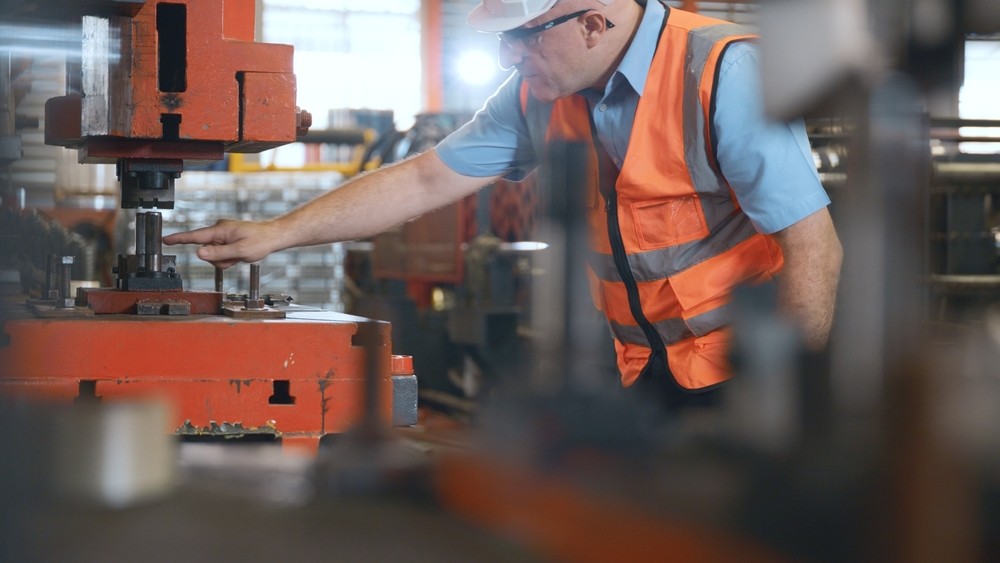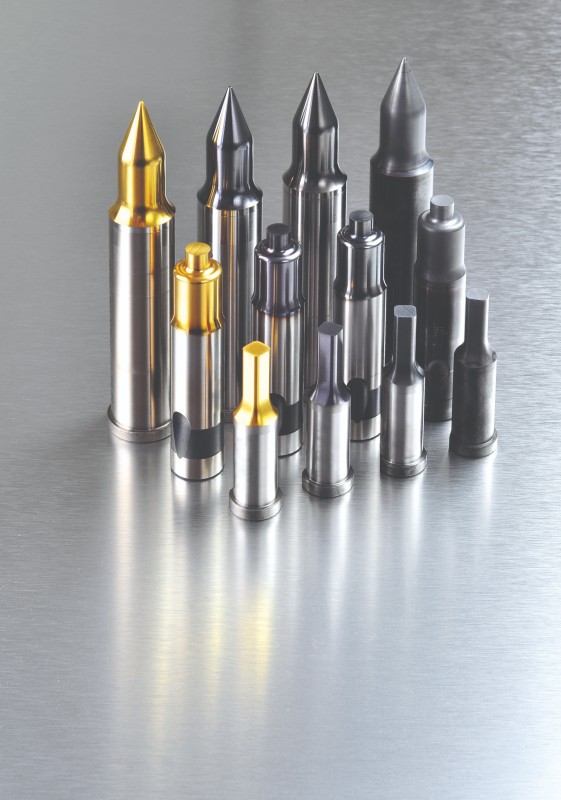Tool wear can be detrimental to your metal stamping process. The faster your tools wear out, the less stocked your tool room is, the more downtime you’ll need to replace them.
Can’t seem to figure out how to reduce the amount of wear put on your tools every day? We have solutions. In this article, we’ll look at the following:
- What precision tool wear is
- Common types of precision tool wear
- How to spot precision tool wear
- How to reduce precision tool wear
Let’s dive in!
What Is Precision Tool Wear?
Precision tool wear is the deterioration and weakening performance of tools over time. It’s a nearly inevitable result of consistent stamping operations. During the stamping process, tools are in constant contact with friction, rubbing, cutting, etc. at high impact levels.
There are various factors that can contribute to precision tool wear, such as:
- Press speed
- Pressure and tonnage
- Temperature
- Work material
- Tool misalignment
Most precision tool wear is gradual and worsens over time. However, there are some cases of abrupt precision tool wear as well, where a tool fails in an instant. This could be caused by a number of factors.
Common Types of Precision Tool Wear
There are many different types of wear that can affect the durability and performance of your tools. It’s important to understand the types of precision tool wear so that you can do your best to prevent or spot them and resolve the issue quickly.
Here are a few of the most common types of precision tool wear die builders and metal stampers deal with:
- Abrasive Tool Wear: This is the most common type of precision tool wear. It’s a result of the tool rubbing, chafing, or scraping against the metal sheet it’s transforming. It dulls the cutting or transformative edge of the tool.
- Flank Tool Wear: Flank tool wear appears on the side of the punch. It’s caused by abrasion between the tool’s cutting edge and the metal sheet being worked on.
- Thermal Cracking: Thermal cracking is caused by extreme temperature fluctuations during the stamping process. It makes cracks in the tool perpendicular to its cutting edge.
- Crater Tool Wear: This is when chips break off the metal workpiece and damage the tool’s face. It creates crater-like imprints.
- Adhesive Tool Wear (Galling): Due to high temperatures and friction levels, the metal workpiece may bond with the tool’s face, causing breakage.
- Chemical Interaction and Oxidation (Rust): This can happen when a tool comes in contact with harmful chemicals or water.
How to Identify Precision Tool Wear
Most of the time, precision tool wear is pretty easy to spot. You’ll see chipping, cracking, notching, or any other kind of deformation once it gets big enough.
However, it’s better to be a bit more proactive than that. Consider implementing a regular tool inspection schedule if you haven’t already. This can help you spot even the smallest signs of tool wear before they cause a bigger issue.
If it’s not identified early enough, precision tool wear can lead to all sorts of problems. It can result in increased tonnage, out-of-tolerance holes and components, increased scrap, and extra sorting costs — all of which are in your best interest to avoid.
4 Ways to Reduce Precision Tool Wear
There’s not really a proven way to prevent precision tool wear from happening altogether. But there are a few ways you can reduce it and make your tools last longer. Try some of these.
1. Use the Appropriate Tool for Your Application
First things first: make sure you’re working with the right tools for the right tasks. There are hundreds (if not thousands) of tools out there, all in different styles, shapes, sizes, materials, etc. It can be difficult to find the perfect one to accomplish whatever job you’re working on, but it’s an important step in ensuring high-quality results.
Some considerations here? Think about:
- Type of tool
- Punch geometry (shape, size, tolerance)
- Tool material and coating
- Die clearance
If that doesn’t quite lead you to the answer you’re looking for, talk with a trusted die component manufacturer like us at Moeller Precision Tool. We can listen to your needs and steer you in the right direction.
2. Choose the Right Tool Material and Coating
All metals have unique properties, and therefore perform differently in certain situations. Make sure you’re using the right tool material and coating for your application. Here are a few examples:
M2 Standard Punch Material vs. PM4 Advanced Punch Material
M2 is the tried-and-true material for standard punching applications. It offers abrasion resistance and can withstand high temperatures without softening. But if you have an advanced stamping application that requires even more durability, PM4 is a better choice. It provides improved wear and impact resistance.
A2 Standard Die Button Material vs. M2 Advanced Die Button Material
A2 is the trusted material for standard die button applications. It has a good combination of toughness and wear resistance, especially when shock is an important consideration. However, M2 is a better choice in advanced die button applications because its properties offer even greater wear resistance.
Standard M2 punch and A2 die button specs can be found in our Inch and Metric catalogs. Advanced PM4 punch and M2 die button specs can be found in our Advanced Stamping catalog.
Also, here’s a photo of some of the performance coatings we offer here at Moeller Precision Tool. Choosing the right coating is often just as important as choosing the right material.
Again, we’re happy to help if you need help determining what the best material and coating solution is for you.
3. Understand Environmental Effects on Tools
The metal stamping process often produces high amounts of energy, friction, and heat — sometimes bringing temperatures up to 700°F. All of these environmental factors, especially heat, can increase the risk of precision tool wear.
Your best bet here is to keep a keen eye on these environmental factors and apply a coolant or lube as necessary. Your choice of material will also impact how well your tools stand up against high temperatures.
4. Invest in High-Quality Tools From a Trusted Manufacturer Like Moeller
There are thousands of tool and die component manufacturers out there, and a lot of them can offer you low costs and quick turnarounds — especially if you’re shopping overseas. Even though that seems like the most cost-effective option upfront, it’s probably costing you money in the long run.
Cheaper tools are likely to experience more intense wear, faster. You’ll spend more money (not to mention time and resources) ordering replacements over the years. When you invest in higher-quality tools from reputable manufacturer like Moeller, you can reduce tool wear, reduce downtime, and reduce your overall operating costs.
Moeller will also provide better customer service. We’re a great resource to bounce questions off of, direct you to the right component, and connect you with other partners in the industry. Our products and services may not be the cheapest options, but we guarantee that the added value and durability of our tools will pay off in the long run.
Keep Your Tool Room Stocked with Durable Solutions From Moeller Precision Tool
Struggling with precision tool wear? Consider investing in higher-quality solutions from Moeller Precision Tool. With a commitment to exceptional quality and uncompromising value, we manufacture our tool and die components to last.
Contact us to learn more about how we can help you regain control of your tool room inventory.


